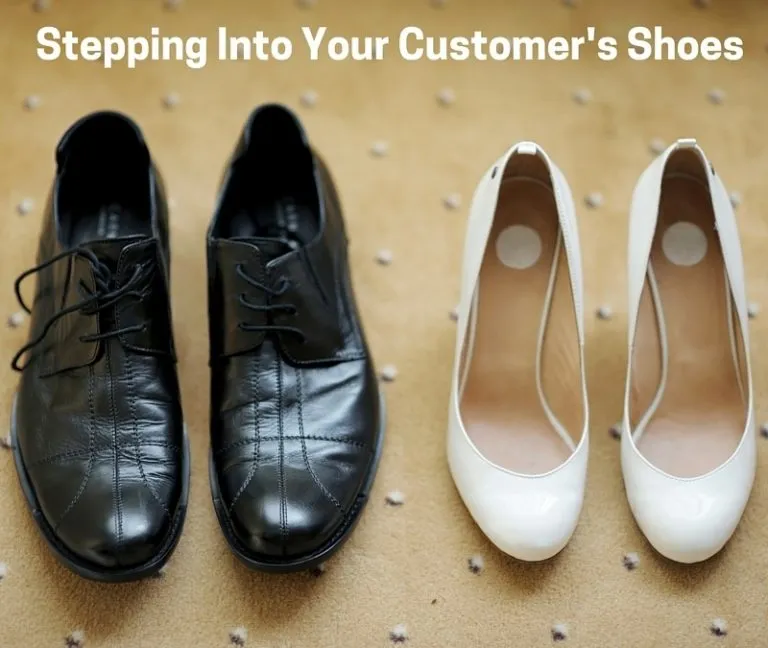A Lead Qualification Checklist Can Help Increase Your Closing Ratio
Knowing clearly who you are trying to sell your products and/or services to is an often glossed over step in a Sales Plan. But, unless you have a clear understanding of their needs and motivations, you can spend a lot of time working with the wrong sales prospect… the kind that doesn’t buy from you.
A Buyer Persona is one of the best tools for helping a sales and marketing team clarify what a qualified prospect looks and how they behave. And from that Buyer Persona, a sales and marketing team can get a better picture of WHO they should be engaging, WHAT message they want to hear, WHERE you can find them online and offline, and WHEN your engagement activity should move from education to sales.
Until the prospect clearly identifies themselves as a ‘sale-ready prospect’, it is a big waste of time to commit valuable sales time and effort to closing them.
Why Lead Qualification is important
Lead qualification is the process of assessing a lead’s purchasing potential. And it allows sales team members to focus their efforts on the prospects who have the highest likelihood of converting.
This doesn’t mean to ‘throw the baby out with the bath water’ though. Some leads just need more time or information to become ‘sales ready’.
As your business engages with prospects through the different communication channels, you need to appreciate that they are on a ‘buyer journey’… one that takes them from ‘uninterested’, to ‘interested and needing information’, to ‘comparison shopping’, and finally to a ‘purchase decision’ For most of that journey, they are not a qualified SALES prospect.
But, that is not a problem. They could still be a very good MARKETING prospect. If you follow them through this journey that they are on, you can increase the probability that they will become SALES-ready and buy from you in the end. This is especially true of more complex, B2B sales processes when this journey can take months or even years.
Being able to qualify leads, you have a better chance of tracking their progress during this time period.
But, you need to establish the criteria and step-by-step structure that your team will need to help ensure that they focus on the prospects that have the highest chance of becoming one of your future clients.
In the following checklist, we are going to discuss those critical questions that your marketing and sales team must get clear answers for before they consider a prospect sales-qualified.
The Five Questions Your Lead Qualification Checklist Should Ask… and Get Answered
Question #1 – Is the prospect truly interested in your product or service?
Not all inquiries are legitimate leads. Many prospects might contact your business with a question that may indicate an interest, but it may only be their effort to understand what is in the marketplace. Once they get the information that they are seeking, they might strike you off of their list. This is not a bad thing… It saves you a lot of time and sales effort. But, many businesses will get excited about an inbound prospect and forget this concept.
What is the right way to follow up with this type of inquiry? This is a marketing lead at most. A follow up call or email is the right ‘next step’. And this communication should focus on asking the prospect if they need to learn more and/or asking them if they are actively looking for a solution to a problem.
If the prospect responds with a ‘no’ to either question (or doesn’t respond), disqualify that lead and move on. Or, you can put them on a low-energy drip campaign.
Question #2 – Do they have a NEED for your product or service?
A lot of ‘dead-end’ sales conversations begin with an excited prospect who really likes your product or service. Their excitement gets you and your sales team excited too. But the truth is, there are a lot of things that we ‘want’ — in both our personal and professional life. But, many of those things never get bought without solving a real problem.
How do you clarify the prospect’s need for your product or service? Well, the most direct questions that you could ask a prospect are the following:
- What are your business goals?
- What obstacles are you facing to achieve those goals?
- How would our product or service help you achieve those goals? (ROI)
- What does the prospect see happening to their business if they DON’T purchase a product or service like yours?
If the prospect can’t clearly answer these questions, you may end up wasting a lot of time with someone who may never become your client. “Want” is not a strong motivation to buy… especially in a ‘B2B’ market.
Question #3 – Do they have the resources to purchase your product or service?
We often think that the ‘resource’ a prospect needs to make a purchase is money. While financial resources are a key hurdle to selling your product or service, sometimes internal management and intellectual resources are equally important.
How do you clarify that the needed resources are available? Ask very specific questions to get specific answers.
If they are to buy your product or service, do they have the budget allocated to this purchase or will they need to seek funds from another business line item? Do they have the internal resources to implement the solution? Do they have management support to champion the solution?
If you have trouble getting clear answers to these types of questions, you may need to back up and clarify the value of the project with the prospect and you.
Question #4 – Is this the right time for them to buy?
There can be several timing issues that can influence a buying decision. Are there seasonal issues to consider? Does the purchase need to be attached to a fiscal year calendar? Is this purchase based on some form of future funding – like a new client or investor funding?
If the timing is not right, you can still create some form of ‘letter of intention’ that commits the client to the purchase based on the future trigger point. This is a way to test the commitment to the purchase.
Question #5 – How does the company decision-making process work?
One of the biggest ‘deal killers’ is the simple fact that you are not talking to the decision-maker. Even though they may be an ‘influencer’, it is always wise to ask up front – “How are purchase decisions made in your organization?”. (This is a better question than “Can you make the buying decision? which can be taken badly by your contact.)
Does their organization require competitive bidding before a purchasing decision of this nature/size? Is there a committee that reviews all proposals? Or is this decision in the hands of one executive?
When you find out who is involved in the purchasing process, make sure that they are a part of the conversation from the very beginning… or as early as possible in the process. This will save you time and energy AND possibly help you to determine the purchasing potential more clearly.
All Prospects are NOT Created Equal
In our modern, digital marketplace, companies can spend a lot of time engaging with prospects and interested parties. That is standard business activity today.
BUT, what you don’t want to do is allocate the wrong resource to that engagement. There should be engagement activity that only deserves responses from the marketing department, others that should be contacted by Inside Sales, and then other engagements that should involve ‘external’ sales/Closers.
Knowing which resource should be allocated to a prospect and when is key to your business’ sales success.
And we understand that for some businesses, especially small businesses, those resources may not be divided among staff, because the staff is not large enough to specialize. But, even a one-person company can divide their time and resources in similar ways. And that might mean that one business person will need to categorize and track prospects so that they know when a prospect deserves a message, a call, or a face-to-face meeting.
We hope that this article has been thought-provoking for you and that it gives you a reason to revisit your sales and marketing procedures. Don’t be that company that chases all leads equally and loses money, time and sanity on the ‘tire kickers’ in your marketplace.
If you would like further information on how to build a better sales funnel, please contact us.








